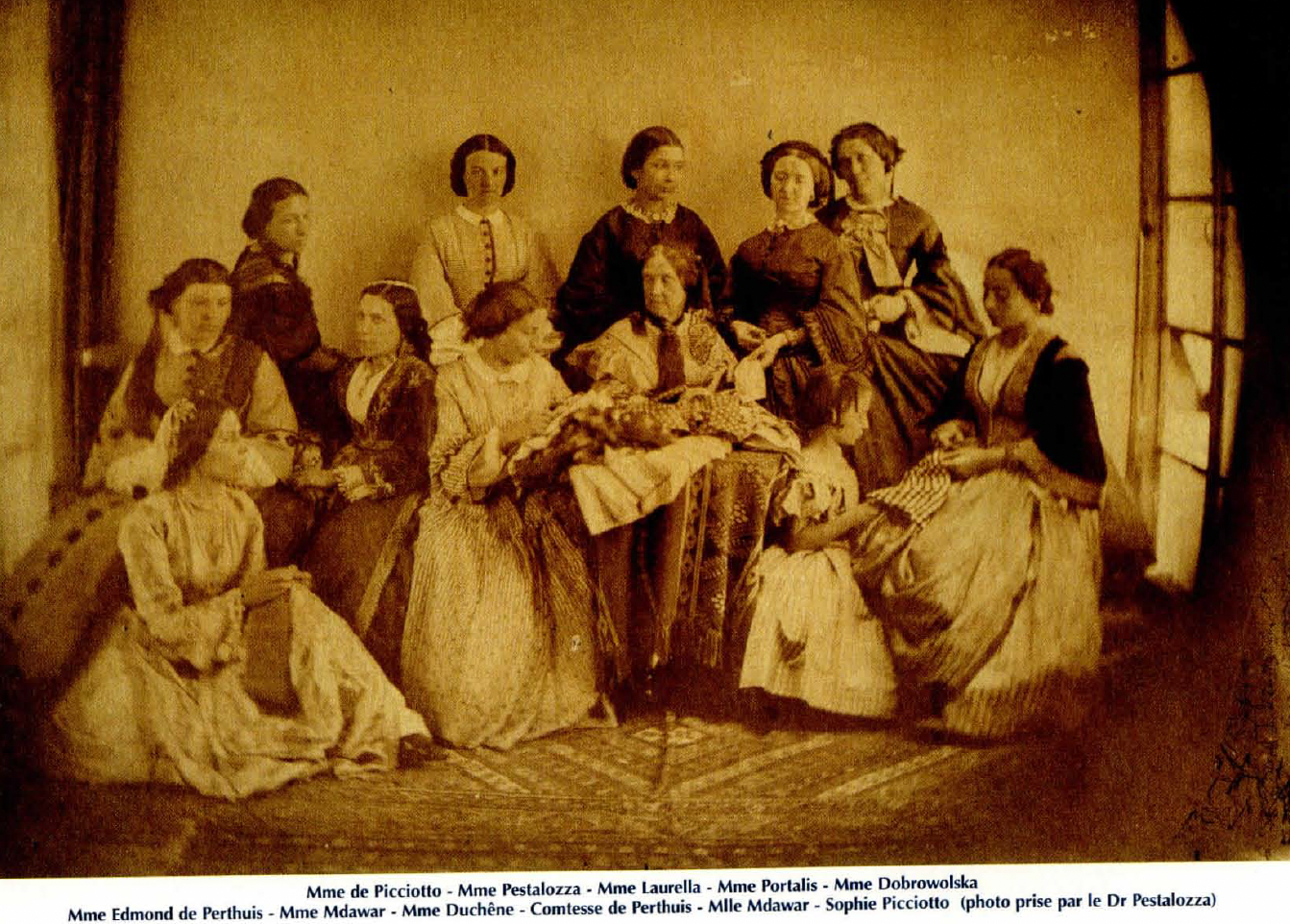The travel manuscript of Countess Elise de Perthuis
Voyages en Orient, the travel journal of Countess Elise de Perthuis was published in a book by Dar al nahar in 2007 under the title Voyages en Orient, 1853-1855, 1860-1862 : journal de la comtesse de Perthuis documenting the Countess’ voyages not only in Lebanon but also the Holy Land, Syria, and Egypt. As the Countess ventured upon travels to the orient the first between 1853 and 1855, and second was between 1860 and 1862, her travel journal can be described as : An unfiltered testimony on Lebanon and the Orient towards the middle of the 19th century.
In the introduction to the travel journal the chief editor Ghassan Tueini, mentions the provenance of the manuscript. He states that Fouad Debbas, who acquired this manuscript in 1990, resisted the temptation to allow its publication. (Tueini, G., ed., 2007). The year 1990, was a sensitive period in Lebanon as it marked the conclusion of the armed sectarian conflict that led to 15 year bloody civil war. Tueini then mentions that with the political context having evolved since then, is the reason why the family has finally decided to release this masterpiece for public reading. He describes this manuscript as a “precious document is an original, perhaps unique, contribution to the study of a critical period in our history. I dare say that we are dealing with a genuine account of “History in everyday life,” devoid of artifice or embellishment.” He assures that this document should have a privileged place in a potential socio-anthropological study of the 19th century, which would serve to better explain certain sometimes prematurely labeled as massacres, civil wars, or, simplifying further, religious wars. Events whose international dimension is not obscured by the informed pen of a European observer who may seem more interested in domestic descriptions than geopolitical analysis. This is why we described this journal as an unfiltered testimony, it allows us to perceive events of the past and discover the complexity of the built up of the Lebanese population and its history.

Image Source: Tueini, G., ed. (2007), Voyages en Orient: Journal de la Comtesse de Perthuis: manuscrit inedit decouvert par Fouad Debbas. Beyrouth: Dar Annahar (p. 37)
The Manuscript’s Publication
The details of the manuscript’s publication process was fully described by Ibtissam Messara as part of the preliminary elements of the travel journal. She explains that this manuscript sparked immense enthusiasm due to its historical value and rich content. Written by Countess de Perthuis, it is bound in a hardcover and measures a substantial 50 cm in length and 37 cm in height, containing 69 drawings and 43 photographs reserved to embellish the 60 numbered pages of the manuscript. Divided into two parts, it chronicles the Countess’s journeys in the Orient from 1853 to 1862, delving into the society and politics of the time. The handwriting, though small and condense, is generally legible, albeit with occasional challenges like confusing Bs with Rs and Ts with Fs. The transcription process involved meticulous care to maintain the integrity of the original text while correcting spelling and grammatical errors. Special attention was given to proper names, with modifications made to ensure clarity and consistency. The goal of the transcriber was to provide readers with a smooth and immersive reading experience, complemented by explanatory notes where necessary. This diligent approach aimed to conserve the essence of the Countess’ narrative while making it accessible to contemporary audiences.
The Manuscript’s context
The context of the manuscript sets before us a French aristocrat immersed in the social milieu of 19th century Beirut. Madame de Perthuis’s memoirs, originally written to be read by her grandchildren and not published, provide detailed narratives of her journeys to the Middle East, spanning from 1853 to 1855 and from 1860 to 1862. During these periods, she actively engaged with diverse communities and observed the interplay between local traditions and external influences. Through her keen observations, Madame de Perthuis uncovers the complexities of daily life, economic activities, social hierarchies, and cultural exchanges that characterized Middle Eastern society at the time. Additionally, Madame de Perthuis’s unique position as the mother of Edmond de Perthuis, a prominent figure in the local European community, afforded her access to various strata of society, from the elite bourgeoisie to the working class. Her memoirs thus provide a multifaceted view of Middle Eastern society, encompassing the experiences of both privileged Europeans and indigenous inhabitants.